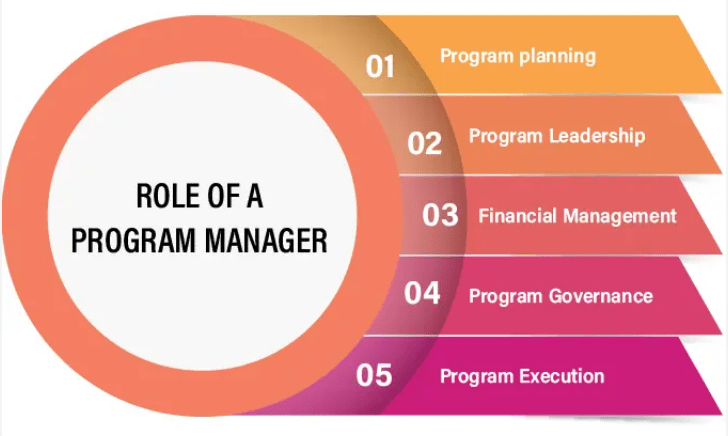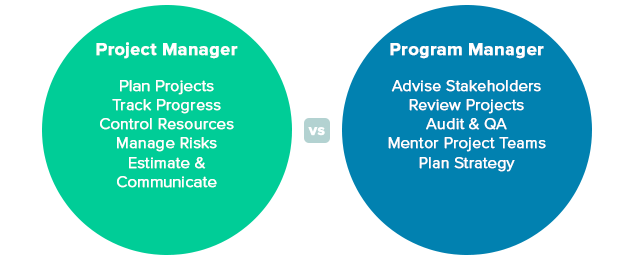
- Introduction to Program and Project Management
- Definition of Program Manager
- Definition of Project Manager
- Scope and Objectives
- Budgeting and Resource Management
- Risk Management Differences
- Career Paths and Certifications
- Conclusion
Introduction to Program and Project Management
Program and project management are two essential disciplines in organizational management that contribute to achieving business objectives effectively. While the terms are often used interchangeably, they differ in scope, focus, and responsibility. Program management oversees a group of related projects aligned with a broader strategic goal. It focuses on long-term outcomes, coordination among projects, and overall benefits realization. In contrast, project management involves planning, executing, and delivering a specific project with defined objectives, timelines, and deliverables. It is more tactical, concentrating on achieving success within a single initiative, much like how Data Science Training focuses on mastering specific skills to succeed in data-driven projects. Program managers guide the overarching vision, manage interdependencies, and align resources, while project managers ensure individual projects are completed on time, within budget, and according to quality standards. Both roles are crucial for successful execution but require different skills, leadership styles, and approaches. Program managers often need strategic thinking and stakeholder engagement, while project managers require detailed planning and execution skills. Understanding the distinction and how these roles work together enhances organizational coordination, resource management, and goal achievement, making it vital for long-term business success.
Interested in Obtaining Your Data Science Certificate? View The Data Science Course Training Offered By ACTE Right Now!
Definition of Program Manager
A Program Manager (PgM) plays a strategic role in overseeing and coordinating multiple related projects within a single program to ensure they collectively support the organization’s broader objectives. Unlike project managers who focus on specific project outcomes, program managers are concerned with long-term value and the overall impact of the program. Their primary responsibility is to align the program’s results with business goals, ensuring that the combined benefits of the projects exceed what each project could achieve individually, much like how Jetbrains Com Pycharm integrates tools to boost overall development efficiency. Program managers manage interdependencies between projects, resolve conflicts, and optimize resource allocation across the program. They also focus on minimizing risks that span across multiple projects, maintaining cohesion, and driving overall program success.

Key responsibilities include high-level planning, monitoring progress at a strategic level, and maintaining strong communication with stakeholders to keep them informed and engaged. By providing direction, setting priorities, and ensuring alignment with organizational strategies, program managers help deliver sustainable value and ensure that all project efforts contribute meaningfully to the success of the program and the enterprise as a whole.
Definition of Project Manager
- Leadership Role: A Project Manager (PM) is responsible for leading a specific project from initiation to completion, ensuring that objectives are met on time and within scope.
- Scope Management: They define the project scope, set clear goals, and manage any changes to the project requirements throughout its lifecycle.
- Time and Schedule Oversight: Project Managers develop detailed project schedules and timelines, ensuring that all tasks are completed on time.
- Budget Control: They manage budgets and resources, similar to how a Big Data Scientist handles large-scale data efficiently.
- Team Coordination: Project Managers organize and guide the project team, assign responsibilities, and facilitate communication among team members.
- Risk Management: They identify potential risks early and implement strategies to mitigate or avoid disruptions.
- Quality Assurance: Ensuring that the deliverables meet the required standards and stakeholder expectations is a key responsibility.
- Stakeholder Communication: Project Managers maintain regular communication with stakeholders, providing updates and managing expectations throughout the project.
- Project Boundaries: It clarifies what is outside the project’s responsibility, helping manage resources effectively.
- Measuring Success: Well-defined objectives provide criteria to measure project success and performance upon completion.
- Time and Cost Estimates: The scope helps establish timeframes and cost estimates, similar to how Data Science Training outlines necessary skills for successful projects.
- Definition of Scope: Scope refers to the boundaries of a project what will be included and what will not. It defines the work required to deliver the project’s goals.
- Clear Objectives: Objectives are specific, measurable outcomes that a project aims to achieve. They guide all project activities and decision-making.
- Project Deliverables: Scope includes detailed descriptions of deliverables, products, services, or results that must be completed to fulfill project goals.
- Stakeholder Alignment: Defining scope and objectives early ensures that all stakeholders share the same expectations about the project outcomes.
- Avoiding Scope Creep: Clearly defined scope helps prevent scope creep, which occurs when unauthorized changes are added, affecting time and budget.
- Scope of Risk: Program managers handle risks that affect multiple projects within a program, while project managers focus on risks specific to a single project.
- Level of Strategy: Program risk management is strategic, considering long-term impacts and organizational goals. Project risk management is tactical, dealing with short-term issues and deliverables.
- Type of Risks: Program managers address high-level risks like inter-project dependencies, market shifts, or alignment with business objectives. Project managers handle operational risks such as schedule delays, budget overruns, or resource shortages.
- Risk Mitigation Planning: Program managers plan across projects, while project managers focus on specific risks—like how an R Programming Tutorial covers both broad and targeted skills.
- Risk Impact: Risks at the program level can disrupt multiple projects, while project-level risks typically impact only that project’s success.
- Collaboration Scope: Program managers coordinate with multiple project managers to ensure consistent risk approaches; project managers work mainly within their team.
- Tools and Techniques: Program managers use broader tools like program dashboards and portfolio risk matrices, while project managers rely on detailed risk registers and issue logs.
To Earn Your Data Science Certification, Gain Insights From Leading Data Science Experts And Advance Your Career With ACTE’s Data Science Course Training Today!
Scope and Objectives

Budgeting and Resource Management
Budgeting and resource management are critical components of successful project execution. Budgeting involves estimating the total financial resources required to complete a project, including costs for labor, materials, equipment, software, and contingency reserves. A well-prepared budget ensures that the project stays financially viable and helps avoid overspending or funding shortages. Effective budgeting also allows project managers to track expenses, forecast future costs, and make informed decisions when changes occur, similar to how Machine Learning Engineer vs. Data Scientist roles require data-driven decision-making. Resource management, on the other hand, focuses on identifying, allocating, and utilizing the necessary resources human, financial, and physical to achieve project goals efficiently. It includes assigning the right people with the appropriate skills to tasks, managing workloads, and ensuring resource availability throughout the project lifecycle. Proper resource management helps prevent underutilization or overallocation, which can lead to delays, burnout, or reduced productivity. Together, budgeting and resource management ensure that the project progresses within its financial and operational constraints. They support timely delivery, quality outcomes, and stakeholder satisfaction. Regular monitoring and adjustment of both areas are essential for adapting to changes, mitigating risks, and keeping the project aligned with its goals and deadlines.
Are You Considering Pursuing a Master’s Degree in Data Science? Enroll in the Data Science Masters Course Today!
Risk Management Differences
Career Paths and Certifications
Career paths and certifications in program and project management offer structured growth and recognition for professionals in these fields. Project managers often begin by managing small projects and, with experience, move on to larger, more complex initiatives. As they progress, many transition into program management roles, overseeing multiple related projects aligned with strategic goals. Career advancement can also lead to positions such as Portfolio Manager, PMO Director, or Operations Executive. Certifications play a crucial role in validating expertise and enhancing career prospects, much like understanding the Types of Artificial Intelligence Explained Simply can boost knowledge and career growth in AI. For project managers, the Project Management Professional (PMP®) from PMI is one of the most respected certifications globally. Others include Certified Associate in Project Management for entry-level professionals and PRINCE2® for process-driven project environments. Program managers often pursue the Program Management Professional certification, also offered by PMI, which demonstrates advanced skills in managing complex, multi-project programs. Additional certifications such as Managing Successful Programmes are also valuable, especially in large organizations or government sectors. These credentials not only build credibility but also expand career opportunities and earning potential across industries.
Want to Learn About Data Science? Explore Our Data Science Interview Questions & Answer Featuring the Most Frequently Asked Questions in Job Interviews.
Conclusion
Program and project management are complementary yet distinct disciplines, each playing a critical role in achieving organizational goals. Program managers focus on the strategic coordination of multiple related projects, ensuring that they align with broader business objectives and deliver long-term value. Their role involves overseeing interdependencies, managing risks across projects, and guiding overall program direction. In contrast, project managers handle the tactical execution of individual projects, concentrating on meeting specific goals within defined timelines, budgets, and scopes, much like how Data Science Training focuses on executing data-driven projects within set parameters. They manage teams, schedules, and resources to deliver successful project outcomes. Both roles require specialized skills, tools, and certifications. While project managers may pursue certifications like PMP or PRINCE2, program managers often advance with certifications such as PgMP or MSP. Understanding the differences between these two roles is essential for organizations to assign the right leadership to the right tasks. Allocating responsibilities effectively between program and project managers ensures not only efficient execution but also strategic alignment and long-term business success. Recognizing their unique contributions helps organizations drive better performance and achieve more sustainable results.


